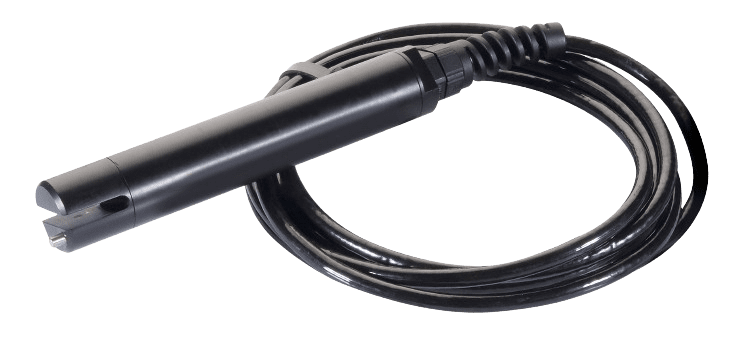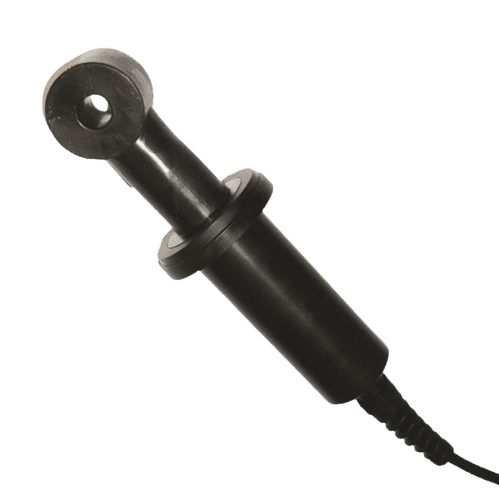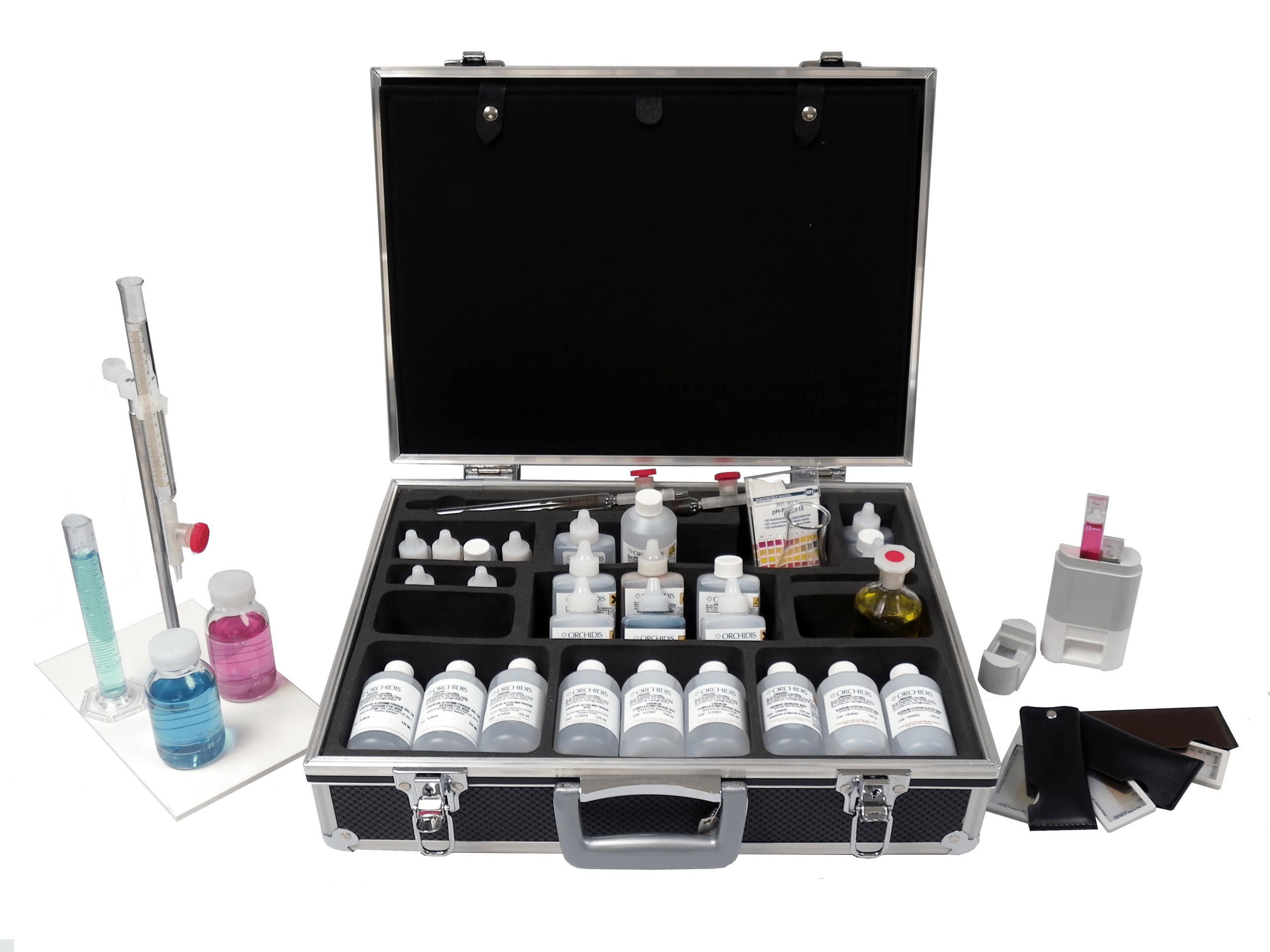
C4E digital sensor
The C4E sensor features a 4-electrode system with alternating current and constant voltage. Its technology ensures accurate conductivity and salinity readings in most water applications, even in challenging conditions.
Learn moreDiscover Aqualabo’s advanced conductivity and salinity measurement solutions with our probes. Offering a plug-and-play experience, using inductive or 4-electrode technologies, they deliver precision in various water applications, making them ideal for municipal wastewater, industrial effluent, surface water, seawater and more.
Our Conductivity sensors can be integrated on any system offering an RS485 or SDI12 input and on our transmitters, portable equipment or datalogger.

The C4E sensor features a 4-electrode system with alternating current and constant voltage. Its technology ensures accurate conductivity and salinity readings in most water applications, even in challenging conditions.

The C4E sensor features a 4-electrode system with alternating current and constant voltage. Its technology ensures accurate conductivity and salinity readings in most water applications, even in challenging conditions.
Learn moreThe CTZN sensor uses an inductive method with ring-type coils, providing low maintenance and consumable-free technology. Its measurement technology ensures stable and accurate conductivity and salinity readings in demanding environments.

The CTZN sensor uses an inductive method with ring-type coils, providing low maintenance and consumable-free technology. Its measurement technology ensures stable and accurate conductivity and salinity readings in demanding environments.
Learn moreMeasuring conductivity in water is crucial for assessing water quality. It provides insights into the water’s ability to conduct electrical currents, a key indicator of dissolved ions and contaminants, salinity levels, and overall water health. Understanding conductivity aids in identifying potential pollution sources, ensuring early intervention for effective water management. Whether in urban wastewater, industrial effluent, or marine environments, regular conductivity monitoring with Aqualabo’s advanced sensors empowers industries and environmental authorities to make informed decisions, promoting sustainable water usage and safeguarding aquatic ecosystems.
Conductivity measurement stands as a cornerstone in diverse water applications. Aqualabo’s advanced sensors find indispensable use in urban wastewater treatment, ensuring compliance with stringent quality standards. In industrial effluent control, conductivity monitoring becomes pivotal for maintaining discharge parameters. Surface water monitoring benefits from accurate assessments, identifying variations and potential contaminants. In sea water analysis, our probes provide valuable insights into marine ecosystems; moreover, conductivity measurement proves crucial in optimizing conditions for aquaculture.
Aqualabo’s conductivity sensors employ cutting-edge measurement principles to ensure accurate and reliable data. The CTZN sensor with a measuring range from 0 to 100 mS/cm utilizes an inductive method with ring-type coils, creating a robust system that requires minimal maintenance and avoids consumables. This technology facilitates consistent conductivity readings in demanding water conditions. On the other hand, the C4E sensor with a measuring range of 0 to 200mS/cm employs a sophisticated 4-electrode system. By using alternating current and constant voltage, this system regulates voltage, compensating for fouling, and guarantees precise measurements even in challenging environments. Aqualabo’s commitment to innovative measurement principles ensures dependable conductivity assessments for applications ranging from urban wastewater to sea water monitoring.
Choose Aqualabo for unparalleled reliability and innovation. Our conductivity sensors, including CTZN and C4E, feature smart digital technology, eliminating the need for frequent recalibration. With universal Modbus RS485 protocol connectivity, seamless integration with various devices is ensured. Because of these practical and efficient features, trust Aqualabo to deliver accurate and consistent conductivity and salinity measurements for a wide range of water applications.

Yes, temperature is a significant factor influencing water conductivity. Our conductivity sensors are all temperature-compensated to provide accurate results.
Thanks to smart digital technology, Aqualabo sensors, including CTZN and C4E, store calibration data internally, offering a plug and play experience without the need for frequent recalibration. Regular maintenance may include cleaning the electrodes, checking for damage and calibrating the sensors. The CTZN (inductive) requires minimal maintenance due to its resistance to fouling, making it a practical choice for installations where access for maintenance may be limited. While generally low maintenance, the C4E (4-electrode system) sensor may require more attention in environments prone to fouling.
Yes, Aqualabo sensors are built to withstand challenging conditions. The sensors are IP68 rated and constructed with durable materials, ensuring reliability in various water environments.
The 4-electrode system in C4E sensors provides enhanced accuracy by regulating voltage and compensating for fouling, ensuring precise conductivity measurements in wastewater, drinking water, and more.
The inductive method in CTZN sensors ensures resilience to fouling, making them particularly well-suited for applications where water conditions might lead to sensor contamination. This feature enhances the sensor's reliability, especially in environments prone to fouling or sedimentation.
AQUALABO is a French manufacturer of instrumentation and chemical reagents for the control and analysis of water quality.